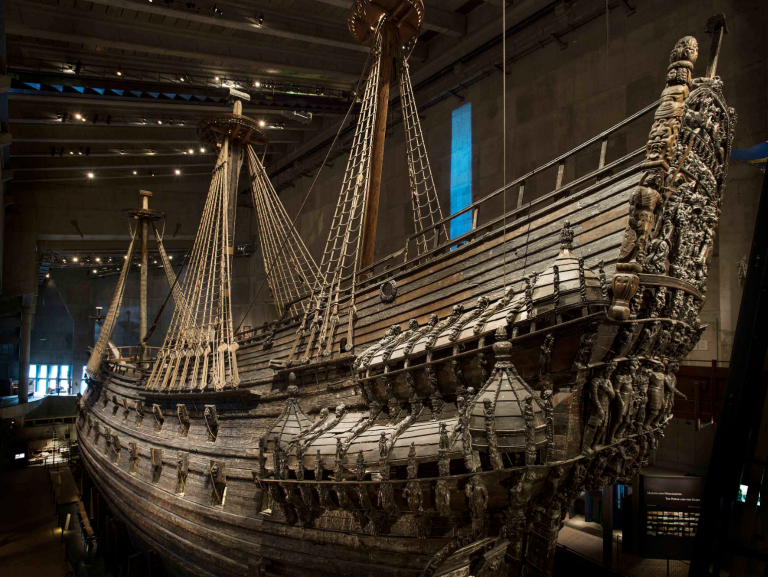Centuries after sinking roughly 1,300 meters into her maiden voyage, Sweden’s most famous warship, the Wasa (pronounced Vasa) was recovered from Stockholm’s harbor. Relocated in the 1950s after being largely forgotten, the 220-foot former flagship was recovered in remarkably good condition in the spring of 1961.
Ornately carved and originally painted in vivid colors, the ship had been commissioned by the Swedish royal family in the early 17th century.
To this day, the Wasa is one of the best-preserved sunken ships in the world. The news of her recovery made headlines across the globe, and she remains one of Sweden’s top ten tourist attractions, drawing over 1.5 million visitors in 2019 alone.
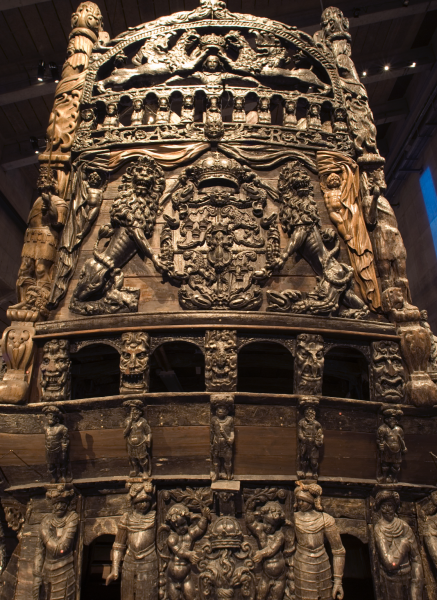
Built between 1626 and 1628 for King Gustav II Adolf, the Wasa was a symbol of Swedish pride, displaying both grandeur and weaponry in excess. On August 10, 1628, she set sail from the castle fortification of Vaxholm on her first trip, with a crowd cheering together with the Swedish monarchy.
Designed by Henrik Hybertsson, a seasoned shipbuilder, the ship was originally intended to hold 36 cannons on the deck. Under the King of Sweden’s elaborate orders on aesthetics, however, she carried 64 bronze cannons, at the expense of the ship’s stability. What might have been a beautiful day for sailing quickly turned catastrophic!
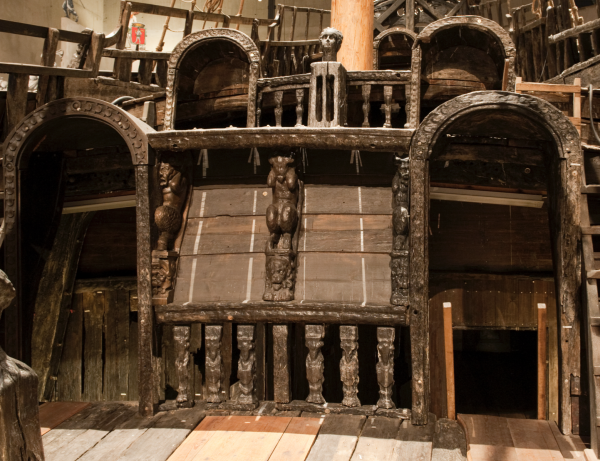
Success
You are now signed up for our newsletter
Success
Check your email to complete sign up
Archaeologists believe that King Gustav’s artistic choices led directly to disaster. Hybertsson was not experienced in ship construction of this proportion and may have lacked the capacity to assess the ship’s stability with the weight of extra cannons and extensive wood carvings. The result was an overburdened ship with a center of gravity that was too high above the sea.
After wobbling against one trade wind, just minutes after setting sail, a second violent blast sent the magnificent warship careening into the ocean as admiring spectators watched in horror. About 30 of the ship’s crew went down with the ship, while approximately 1,035 survived the naval disaster that would haunt the Swedish Empire for years.
Over 300 years later, divers spotted the ship off the coast of Sweden, kicking off a restoration process that would take many years to finish. Workers had found it challenging and risky to unearth the Wasa since it was tightly fused with the seabed’s hardened blue clay.
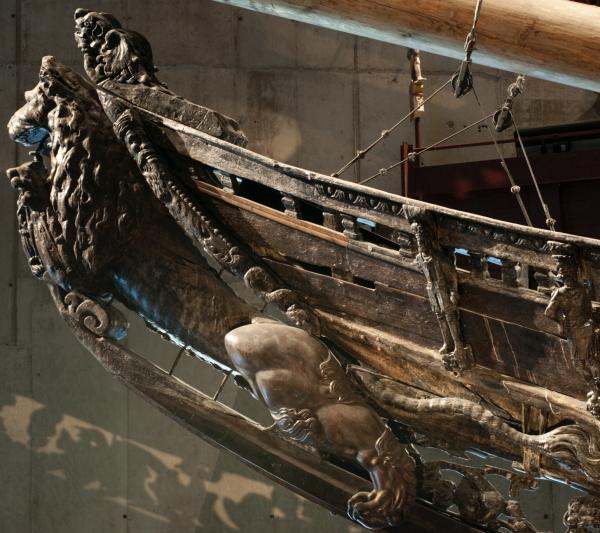
Because the Baltic was devoid of the wood-eating shipworms that plagued warmer, saltier areas at the time, the Wasa was still 95 percent intact after three centuries, making the recovery attempt worthwhile.
Sweden’s king at the time, Gustav VI Adolf, was a devoted archaeologist who led the royal court’s attempts to salvage the ship. As a result, the Vasa once again became a national treasure, and people flocked to see the ancient warriors’ carved heads rise from the sea.
Anders Franzén, an amateur archaeologist, spearheaded the ship’s rescue with tenacity, and it is to his and his team’s credit that over 35 million tourists have visited the Wasa Museet (Vasa Museum) over the years, witnessing the ornately decked vessel, partly restored to her former beauty.
The Vasa is considered the 17th-century Air Force One for its symbolic exhibit of strength, power, and workmanship. With 64 guns, a big crew, and hand-to-hand fighting tools, she was the most heavily equipped vessel in the Baltic at the time.
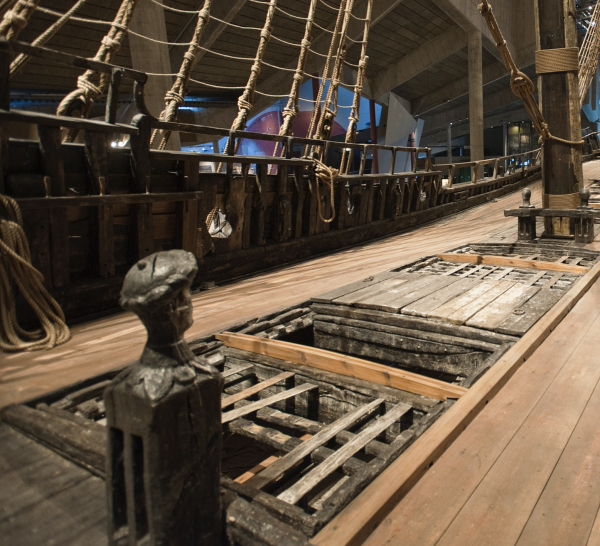
The flagship, with her majestic grandeur and unrivaled weaponry, was King Gustav’s way of demonstrating to the rest of Europe that Sweden was a power to be reckoned with on the high seas.
While Swedish design today is well-known for its minimalist approach, the Scandi reverence for aesthetics was historically the opposite. Hundreds of statues and ornaments, including armed Greek and Roman heroes like Heracles and Hercules wrestling with lions, biblical characters like Gideon and David, and angels adorn the ship’s exterior.
The ship has been on exhibit in Stockholm’s Vasa Museum since 1988 after the preservation crew spent three decades in restoration and preparation for public exhibition.



